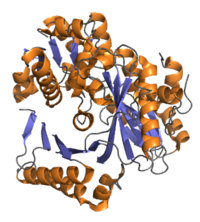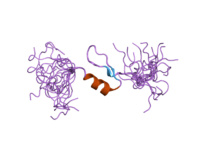
Genome‐wide analysis of the mouse LIM gene family reveals its roles in regulating pathological cardiac hypertrophy
Sign Up to like & getrecommendations! Published in 2021 at "FEBS Letters"
DOI: 10.1002/1873-3468.14168
Abstract: LIM‐domain proteins have been shown to be associated with heart development and diseases. Systematic studies of LIM family members at the genome‐wide level, which are crucial to further understand their functions in cardiac hypertrophy, are… read more here.
Keywords: genome wide; cardiac hypertrophy; analysis mouse; family ... See more keywords

HIPK1 Inhibition Protects against Pathological Cardiac Hypertrophy by Inhibiting the CREB-C/EBPβ Axis.
Sign Up to like & getrecommendations! Published in 2023 at "Advanced science"
DOI: 10.1002/advs.202300585
Abstract: Inhibition of pathological cardiac hypertrophy is recognized as an important therapeutic strategy for heart failure, although effective targets are still lacking in clinical practice. Homeodomain interacting protein kinase 1 (HIPK1) is a conserved serine/threonine kinase… read more here.
Keywords: pathological cardiac; hypertrophy; hipk1; cardiac hypertrophy ... See more keywords

Chrysophanol attenuated isoproterenol‐induced cardiac hypertrophy by inhibiting Janus kinase 2/signal transducer and activator of transcription 3 signaling pathway
Sign Up to like & getrecommendations! Published in 2019 at "Cell Biology International"
DOI: 10.1002/cbin.11146
Abstract: Cardiac hypertrophy is a common pathological change found in various cardiovascular diseases. Although it has long been recognized as an important risk factor responsible for heart failure, there is still a lack of effective treatments… read more here.
Keywords: cardiac hypertrophy; transcription; induced cardiac; hypertrophy ... See more keywords

Up‐regulation of SNHG16 induced by CTCF accelerates cardiac hypertrophy by targeting miR‐182‐5p/IGF1 axis
Sign Up to like & getrecommendations! Published in 2020 at "Cell Biology International"
DOI: 10.1002/cbin.11333
Abstract: Long non‐coding RNA (lncRNA) SNHG16 has been reported to be significant regulators in multiple cancers. However, never has the relationship between it and cardiac hypertrophy been studied until now. In this study, angiotensin II (Ang… read more here.
Keywords: cardiac hypertrophy; mir 182; igf1; expression ... See more keywords

Inhibition of intermittent calcium‐activated potassium channel (SK4) attenuates Ang II‐induced hypertrophy of human‐induced stem cell‐derived cardiomyocytes via targeting Ras–Raf–MEK1/2–ERK1/2 and CN–NFAT signaling pathways
Sign Up to like & getrecommendations! Published in 2022 at "Cell Biology International"
DOI: 10.1002/cbin.11948
Abstract: Cardiac hypertrophy caused by angiotensin II (Ang II) is essential for the pathological process of heart failure. The intermediate calcium‐activated potassium channel (SK4) has been shown to be involved in the process of the inflammatory… read more here.
Keywords: cell; hypertrophy; cardiac hypertrophy; calcium activated ... See more keywords

Prostaglandin E2 induced cardiac hypertrophy through EP2 receptor‐dependent activation of β‐catenin in 5/6 nephrectomy rats
Sign Up to like & getrecommendations! Published in 2021 at "ESC Heart Failure"
DOI: 10.1002/ehf2.13269
Abstract: Prostaglandin E2 (PGE2) is involved in the development of cardiac hypertrophy. However, whether PGE2 regulates the chronic kidney disease‐associated cardiac hypertrophy and the tentative mechanism remains to be elucidated. read more here.
Keywords: cardiac hypertrophy; induced cardiac; hypertrophy ep2; hypertrophy ... See more keywords

Tropisetron restores normal expression of BAD, SIRT1, SIRT3, and SIRT7 in the rat pressure overload-induced cardiac hypertrophy model.
Sign Up to like & getrecommendations! Published in 2023 at "Journal of biochemical and molecular toxicology"
DOI: 10.1002/jbt.23355
Abstract: Tropisetron exerts a protective effect against cardiac complications, particularly cardiac hypertrophy. Oxidative stress and apoptosis are the main contributors to the pathogenesis of cardiac hypertrophy. Sirtuins, a family of histone deacetylases, are connected to cellular… read more here.
Keywords: hypertrophy; sirt1 sirt3; expression; cardiac hypertrophy ... See more keywords

Glycosylated CD147 reduces myocardial collagen cross‐linking in cardiac hypertrophy
Sign Up to like & getrecommendations! Published in 2018 at "Journal of Cellular Biochemistry"
DOI: 10.1002/jcb.26713
Abstract: The mechanism of transition from chronic pressure overload‐induced cardiac hypertrophy to heart failure is still unclear. Angiotensin II (Ang II) may be an important factor that mediates the transition in the end‐stage of cardiac hypertrophy.… read more here.
Keywords: cardiac hypertrophy; hypertrophy; cross linking; collagen cross ... See more keywords

Possible mechanism of GATA4 inhibiting myocardin activity during cardiac hypertrophy
Sign Up to like & getrecommendations! Published in 2019 at "Journal of Cellular Biochemistry"
DOI: 10.1002/jcb.28178
Abstract: Myocardin is an important factor that regulates cardiac hypertrophy, and its activity can be regulated by GATA4. However, the molecular mechanism of the above process remains unclear. This paper presents three kinds of possible molecular… read more here.
Keywords: cardiac hypertrophy; gata4 inhibiting; myocardin; gata4 ... See more keywords

The long noncoding RNA XIST regulates cardiac hypertrophy by targeting miR‐101
Sign Up to like & getrecommendations! Published in 2019 at "Journal of Cellular Physiology"
DOI: 10.1002/jcp.28047
Abstract: Cardiac hypertrophy and its resultant heart failure are among the most common causes of mortality, worldwide. Long noncoding RNAs (lncRNAs) are involved in diverse biological processes, and their vital role in the regulation of cardiac… read more here.
Keywords: cardiac hypertrophy; long noncoding; mir 101; tlr2 ... See more keywords

CHIP attenuates lipopolysaccharide‐induced cardiac hypertrophy and apoptosis by promoting NFATc3 proteasomal degradation
Sign Up to like & getrecommendations! Published in 2019 at "Journal of Cellular Physiology"
DOI: 10.1002/jcp.28614
Abstract: Carboxyl‐terminus of Hsc70 interacting protein (CHIP) is a chaperone‐dependent E3‐ubiquitin ligase with important function in protein quality control system. In the current research endeavor, we have investigated the putative role of CHIP in lipopolysaccharides (LPS)‐induced… read more here.
Keywords: degradation; cardiac hypertrophy; hypertrophy apoptosis; chip ... See more keywords